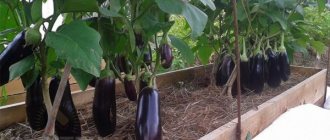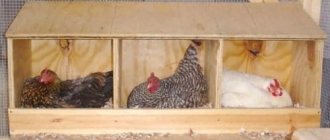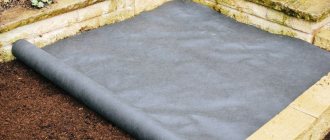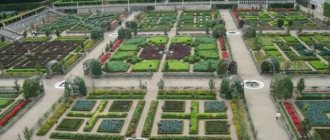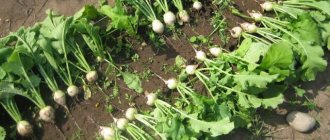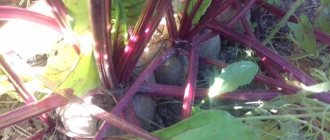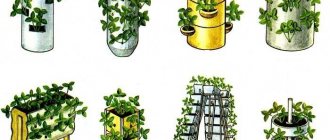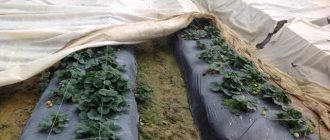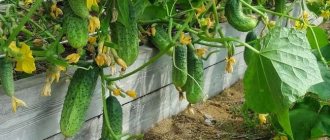The better way to process virgin soil
It is quite possible to turn virgin soil into fertile soil for growing garden crops. The first stage is plowing the land. It is best to use a tractor, but this is quite expensive and is not possible in small areas.
Plowing virgin soil with a tractor
It is possible to process virgin soil with a walk-behind tractor, but its power may not be enough for areas that are too hard. In this case, the procedure must be repeated several times (first superficially, then deeper), or in a wet state, so that the equipment does not slip. The advantage of using any technique is less labor costs and faster results.
Processing small areas is carried out manually only with a shovel, but this is quite hard work. Mechanical devices and hand plows are not used for plowing virgin soil, since the strength of one person is not enough.
Removing old turf from virgin soil
If digging with machinery is not possible, the soil is dug up manually with a shovel, lifting it to a depth of 15 cm. The lumps are not broken, but left to dry, after which the turf is shaken off the soil, helping with a hand ripper. Plant rhizomes are placed in a compost pit to rot.
Virgin soil for a vegetable garden - how to develop it and how to dig up the soil
Digging the earth, as well as cultivating the soil in the fall, are one of the most important elements of crop cultivation technology. In arid areas, this contributes to the accumulation and preservation of moisture in the soil; in excessively moist areas, it helps to eliminate it.
In addition, this technique improves the air and nutrient regimes of the soil , creates favorable conditions for the life of soil microorganisms, ensures the incorporation of fertilizers, and plays an important role in the fight against weeds, diseases and pests of agricultural crops.
Very often, novice summer residents are given land for a vegetable garden with a predominance of low-value rhizome and root weeds (wheatgrass, sow thistle, dandelion, thistle) in the grass stand. It is important to properly treat such areas and dig up the turf.
Disking
There is a classic scheme for cutting a layer of perennial grasses and it is advisable to strictly adhere to it. The field is disked in two directions (first along, then across).
This agricultural technique shreds the turf and partially turns it over. Very often, on heavy, waterlogged soils, disking completely replaces autumn plowing, especially for vegetable crops.
Disking is carried out using disc harrows , hullers and plows (without turning the formation). The discs are good at cutting horizontally located rhizomes and root suckers into small pieces and provoking them to germinate. It is best to repeat disking before frost sets in.
The second treatment is carried out, as a rule, 2-3 weeks after the first, or more precisely, after the fallen weed seeds germinate.
If the turf is well cut in the fall, then when plowing under the garden in the spring it will ensure good wrapping of the layer.
How to develop virgin soil for a garden in the spring
Perennial grasses are a good predecessor for many crops. It is best to place cabbage or potatoes in such an area.
To avoid large labor costs in developing such a site, your actions must be rational.
It is advisable to divide the area in half , then mark the middle and dig the first furrow exactly in the center. Before this, remove a layer of turf 5 cm thick and lay it with the grass up at the edge of the second half of the plot.
Then, digging deep into the bayonet of the shovel, they remove the layer and fold it next to the previously removed turf. The soil at the bottom of the furrow is loosened with a pitchfork to a depth of 20-25 cm. If necessary, fertilizers are applied at the same time.
Next, remove the turf at the site of the second furrow and lay it on the bottom of the first; the furrow itself is covered with soil from the second furrow.
This is repeated until the area is dug up. The turf removed from the first furrow is transferred to the last.
This method of processing a layer of perennial grasses significantly improves the water and physical properties of the soil . And most importantly, it destroys the compacted layer of soil, called the sole.
Such a sole is usually formed as a result of tilling the soil to the same depth (at the bayonet of a shovel). As a rule, such a soil base negatively affects the growth of many agricultural crops, especially root crops.
How to dig up soil
A simple digging of an area is not much different from the above, the only difference is in removing the turf. For the winter, it is recommended to dig up the garden without breaking up the clods.
This will help retain snow and accumulate moisture in the soil. In addition, during late autumn digging, pests that have gone into the soil for the winter end up close to the surface and most often die.
Minimum tillage
In agriculture, minimum tillage is widely used, the essence of which is to reduce the number and depth of tillage in well-cultivated areas.
For example, in areas of sufficient moisture, fall plowing (digging) for row crops is replaced by shallow or surface tillage.
This leads to a reduction in labor and energy costs, and a reduction in excessive soil compaction.
Experts say that minimal tillage slows down the process of humus decomposition and thereby helps maintain soil fertility .
The practice of growing vegetables without pre-cultivation of the soil has also developed. Her followers sow seeds or plant seedlings on a layer of compost scattered over the surface of the plot.
This practice is based on the theory of natural restoration of soil fertility . According to proponents of minimal tillage, digging leads not only to the destruction of growing weeds, but also to the germination of numerous seeds in the soil.
Of course, the method of minimal tillage has its advantages : the level of soil fertility that develops under such a farming system contributes to the successful cultivation of vegetables.
However, it has been experimentally established that in dug up areas the yield and quality of vegetable crops doubles.
In conclusion, I suggest you watch a video that describes the experience of developing a vegetable garden in a field from scratch:
How to prepare the soil for planting vegetables
After the first processing of virgin soil, you cannot immediately begin cultivation. It is necessary to further prepare the land. If the soil was processed using machinery, then weeds are not selected from it, as with manual digging, but are plowed up along with the soil.
After plowing with a walk-behind tractor or
To improve the structure of the soil and saturate it with useful microelements, green manure plants (mustard, lupine, oats, rye, alfalfa) are planted. When the greenery grows, it is mowed and additional digging is carried out using machinery or manually.
Winter crops are planted in winter. In early spring, after the snow melts, the third plowing is carried out and the plot is planted with garden crops for the first time.
After manual digging
When cultivating the land manually, you can use the previous method, but more often they do it differently. The land freed from turf is treated with herbicides to kill weeds. Then sprinkle with peat, humus or sawdust and dig, mixing everything.
A week later, the soil is fertilized with complex mineral fertilizers: potassium sulfate, ammonium nitrate, nitrophoska, superphosphate and dug up a second time. The land becomes suitable for use as a vegetable garden.
Processing the area with a tractor
The tractor is suitable for processing large areas
The easiest way to cultivate land covered with wild vegetation is to use a tractor with a plow and harrows. It’s good if you have your own tractor and replacement equipment for it. But not everyone has such serious equipment; most people hire tractor owners to cultivate virgin land.
True, this option is only good for owners of large plots, the conditions of which allow the use of large equipment. But most often, access for heavy equipment is impossible due to narrow streets, numerous outbuildings and trees. In addition, in a small area there is simply no room for the tractor to turn around. Therefore, owners of standard 6 acres have to look for other options.
What to do if you need to process a large area manually
When processing a large area of virgin soil by hand, a popular method is dividing the area into small segments, which are covered with a double layer of dense material at least 5 cm thick. You can use cardboard, straw, black film or spandbond, and press down with bricks.
Mulching virgin soil under the beds with cardboard
The ground overgrown with grass is left covered until autumn, when the greenery under such dense mulch has time to rot and rot. Thanks to humus, many earthworms will appear, which will loosen the soil, and the soil will be easier to work with. The disadvantage of this method is that the beds are ready for planting only at the beginning of the next season.
It is possible to prepare the land using inverted turf. Areas overgrown with grass are dug up manually with a shovel. Potatoes are planted in the resulting holes, which are covered with dug up turf, turning it over with the grass part down.
Digging virgin soil with turning over turf
The grass in the ground rots, thereby fertilizing the potatoes and promoting their growth. This method allows you to harvest the crop the first time you plant it. But the timing of planting potatoes must be observed.
If space for beds is needed for urgent planting, and it is not possible to wait until next year, you can use the option of bulk beds. The prepared fertile soil is poured directly onto virgin soil, and the rows are dug up and treated with targeted herbicides. Plants with a shallow root system (zucchini, cucumbers) can be planted in them.
Development of virgin soil without digging: planning and marking
The next stage of development involves not so much physical as mental labor.
It is necessary to think about, plan, draw, draw, and subsequently mark out future beds and row spacing in place. You can go the classic route and mark out meter-wide beds with 60-70 centimeters of free space between them.
Many natural farmers are now leaning towards narrow beds with wide aisles. As they say, what is easier - to plant 50 plants and collect 50 kilograms of crops or to plant 10 plants and collect the same 50 kilograms from them? Narrow beds are aimed precisely at getting a larger harvest from a smaller area. In addition, wide aisles will be easier to mow in the future, and more grass will grow in them (it is the grass mowed in the aisles that will become the main mulch for our future beds).
Or you can even be original: make the beds round, triangular, asymmetrical - in this matter, everything is your will.
What else is important to pay attention to when planning beds? On the climate! If hot, dry summers are the norm for your region, don't get carried away with raised beds in boxes; organic trenches and sunken beds are better suited for you. In cool and rainy climates, the opposite is true. If there is complete uncertainty with weather conditions, if there are often sudden changes in temperature, flat beds directly on the ground are preferable.
How to remove wheatgrass...
Buried turf is alive. And it contains a lot of pupae, eggs, and larvae of pests. Therefore, if you have the opportunity and desire, a week or two before digging it would be a good idea to treat it with a strong solution of urea or ammonium nitrate (which will speed up the decomposition of the buried turf and reduce the number of pests). When the fertilizer takes effect and the grass turns yellow, you can start digging.
Now specifically about the solution. I take 500 g of fertilizer and dissolve it in a bucket of water. I spray it with a spray bottle in sunny, windless weather, after the morning dew has disappeared.
Therefore, before treating with urea, you need to check the weather forecast. Don't spray before it rains!
And then one day, after a rainstorm, my dried grass began to grow again. I had to use another solution, since there was no more urea (as well as the opportunity to buy it): I took 150 g of vinegar (9%) per 2 liters of water and added 5 tbsp. l. salt. I note that treatment with vinegar is considered an environmental means of control, since it quickly decomposes into carbon dioxide and water. Of course, it is also necessary to cultivate the soil with such a solution only in dry weather.
And one more nuance. When digging, especially if it’s in the fall, you need to put old newspapers between the layers of soil (A and B). They will rot over the winter, and this is an additional obstacle for pests and weeds.
Varieties of green manure
Today, a huge number of green manures are distinguished, which can act as both legumes and cereal plants. The root system of legumes includes nitrogen-fixing bacteria, which enrich the soil with nitrogen. With the help of cereal crops, humic substances accumulate in soils. They also help improve the soil structure. The most effective green manures include:
- Radish;
- Sweet clover;
- Mustard;
- Vika;
- Oats, etc.
These green manures are characterized by a fairly developed ground part, which provides protection from soil erosion and the negative influences of wind.
How to raise virgin soil on a site. HOW I BOUGHT AN ABANDONED LOT
You remember there was a fascinating story in which a summer resident told how she won a plot of turf.
Yes, this is indeed a very interesting topic, and I also decided to share my memories of how I raised virgin soil. As a child and youth, I constantly had to help my parents work in the garden. And it was rather big - 25 acres! In general, I had the opportunity and time to fully learn peasant labor and find out how much it cost. Therefore, when I bought a dacha, the cultivation of these six acres seemed to me like a game in the sandbox, compared to the past battles for the harvest in the “endless” open spaces. Moreover, I inherited many of the plantings on the site from the previous owners.
In general, I turned around there to the fullest and things went well for me. But when I had a granddaughter, who needed to be fed with natural products, the garden seemed a bit crowded to me. And I began to look closely at the neighboring plot, which had not been cultivated for many years. What attracted me most about it was that it was 12 acres: one half was a neglected garden, the other was “walking” land. After consulting with my daughter, I decided to purchase this plot. No sooner said than done.
During my first walk around the new property, I realized that it wouldn’t be easy: there were heaps of dry branches, some kind of doors, cuttings of boards everywhere, and all this was covered with wheatgrass and wormwood, as well as thistles as tall as me. When I decided to go deeper into this jungle, I discovered that part of the former vegetable garden was also occupied by wild raspberries. For the sake of the purity of the experiment, I tried to stick a shovel into the ground, and it bounced off like a ball, burying itself in a continuous tangle of roots. Well, I thought, stop playing in the sandbox, now things will start to get serious.
Uses of lupine
Lupine belongs to the category of annual plants that are characterized by a fairly developed root system. That is why it can be used to develop virgin lands. This is a leguminous plant, therefore, after developing virgin soil, planting peas, beans and beans is not recommended. After this plant, you can plant cabbage, potatoes, and tomatoes.
Since the plant has a powerful root system, it helps to actively loosen the soil. Lupine also has a positive effect on the process of saturating the soil with nitrogenous fertilizers. Planting green manure in most cases is carried out using the row method. Per square meter of land you need to use 4 to 5 grams of lupine seeds. Agrotechnicians recommend planting the plant in early spring. After 5 weeks, the above-ground part is embedded in the soil.
You can mow green fertilizer at any time. To eliminate the possibility of weeds developing on the site, it is necessary to prevent seeds from forming on it. Otherwise, the stem of the green fertilizer will become rigid, which will slow down the process of rotting. Thanks to the tap root system of the plant, which has an impressive length, nutrients are extracted from the depths of the site. From the above-ground part of the crop, vermicompost is produced, which can replace the effect of manure.
Walk-behind tractor for plowing land
Experienced farmers are well aware of how important it is to carry out high-quality cultivation of the land before planting, as well as in the fall. Productivity largely depends on this. If earlier you had to spend whole days on such work, now you can use a walk-behind tractor that will cope with the task in an hour. When choosing a high-quality and productive device, you can process in two hours the area that would take a whole day with manual plowing.
When choosing an assistant to work on the farm, many people wonder whether it is possible to cultivate the land with a Neva walk-behind tractor or another model, or whether a walk-behind cultivator is better. In fact, there are no significant differences between these types of technology. Many farmers use both one and the second name to refer to conventional walk-behind tractors.
How to properly develop virgin land?
In order for the virgin soil to begin to produce crops as quickly as possible, it is necessary to dig it up. To facilitate this process, the area is plowed. After this, it is recommended to remove large roots of virgin plants from it. It would be best to carry out the procedure several times, which will significantly increase its quality. After this, green manure is planted. To develop virgin lands, a variety of green manures can be used. They will have a beneficial effect on the quality of the soil, and will also eliminate the possibility of weed growth on the site.
Rules for growing green manure
Rules for the use of green manure
To ensure high-quality use of green manure crops, it is necessary to plant and harvest them correctly. In order to eliminate perennial plants from a virgin plot, green manure should be planted in scattered form. It is strictly forbidden to mow winter green manure before frost. They must be left until next spring. These plants will not only protect the soil from freezing, but will also be able to destroy the roots of former plants.
How to improve productivity?
We are constantly receiving letters in which amateur gardeners are worried that due to the cold summer this year there will be a poor harvest of potatoes, tomatoes, cucumbers, and other vegetables. Last year we published TIPS on this matter. But unfortunately, many did not listen, but some still applied. Here is a report from our reader, we would like to recommend plant growth biostimulants that will help increase the yield by up to 50-70%.Read…
To fully restore the soil, mowing green manure should be done using a scythe or flat cutter. This will limit the possibility of damage to the root system, which will have a beneficial effect on the quality of the soil. After mowing green manure, it is strictly forbidden to plow the soil. This is explained by the fact that this procedure negatively affects the quality of feeding. Green manures are annual plants. When planting them, it is imperative to take into account the timing, which will have a beneficial effect on the quality of soil enrichment with minerals.
Application of mustard
Greenhouse mustard in a greenhouse
This plant can be planted several times per season. It is best to plant green fertilizer several weeks before the onset of frost. Under their influence, the green mass will fall to the ground, which will ensure the most effective protection from frost, as well as high-quality rotting of the biomass.
Mustard is characterized by rapid germination and rapid growth of green mass, which is why it is widely used for the development of virgin lands. Mowing the ground part of the plant is done before the first flowers appear on it. In order for mustard to kill perennial plants, it is planted randomly. For one square meter of land, you need to use from 4 to 7 grams of seeds of this crop. With an increase in the number of seeds, rotting of the mustard near the root may occur during its growth, which will negatively affect soil fertility.
PLOWING VIRGIN GROUND – FIRST EXPERIENCE
I decided not to panic and not to rush in my actions. I thought that over the summer I would plow it all over with a tractor so that the upturned roots would dry out and then they could be picked out without much effort. And the raised layers of compacted earth would have gotten wet over the winter, and I would have loosened them next year. But life dictated its own rules. The summer turned out to be very hot and dry, and therefore I did not have the opportunity to burn all the trash, as well as the cut wild raspberry branches. All this had to be piled up in a huge pile in the middle of the plot to free up space for plowing.
And the ground under the thickets of weeds gradually became more and more covered with cracks due to the heat. I waited for the rain to wet it at least a little, but in vain. And time goes by. Tenants on neighboring plots began to sow winter crops directly into dry soil, but my work remained stagnant. In the end, I started looking for a machine operator who would agree to help me with plowing the land.
The young guy agreed, but when he arrived and saw my virgin soil, he fell into a stupor, saying that even he couldn’t do anything with his equipment.
My heart sank: this is how I gave myself a “gift”. I barely persuaded the boy to at least scratch the ground somehow and that I would have no complaints about the quality of his work. Reluctantly, he agreed. So, by mid-autumn, finally, my virgin plot with a pile of garbage in the middle was scratched by the plow, and I was happy with at least some results. At least she could already light a fire without fear that the fire would run across the continuous grass. And here it is November. It's -5° outside, there are only watchmen at the neighbors' dachas, and I'm the only dacha resident. But that’s good: no one will complain about the smoke from my fires. And I, without haste, dealt with a huge pile of branches, rubbish and weeds, and left my possessions until spring.
Link on topic: New summer cottage - what you need to do with your own hands first
Features of growing fertilizers
Improvement of soil condition is carried out by a variety of plants. Thanks to their underground part, a system of root canals is created, as well as the delivery of nutrients to soil inhabitants. With the help of the ground part, the soil is shaded, as well as protected from influences such as blowing away and erosion. Thanks to these excellent qualities, plants are used to enrich soils.
In order to ensure the full growth and development of crops on virgin land, it is necessary that sixteen components be present in it. The main ones include hydrogen and carbon. Also, the soil should consist of:
- Magnesium;
- Calcium;
- Sulfur;
- Phosphorus;
- Potassium;
- Nitrogen.
Plants also need trace elements in the form of boron, copper, manganese, iron, zinc, molybdenum, and chlorine. In order to add organic and nutrients to the soil, it is necessary to use green manure. With their help, not only the soil is saturated with nutrients, but also its structuring.
How to make a bed on turf. Garden bed on turf without digging
Probably every summer resident has encountered the problem of developing “virgin” lands. But digging up and choosing weeds in all the beds at once is simply an impossible task. Nikolai Kurdyumov tells how to make a new bed without digging.
So: 1) Choose a place, mark the position with pegs. You can make a narrow bed 50 cm wide, stretched from North to South.
2) Make a box according to size from available materials.
3) Inside the box, you can put manure or compost (whatever you have) directly on the grass. If there is a pile of overgrown humus left, take the humus and coarse, unrotted remains.
4) Next, put the packaging cardboard (you can put newspapers in 3 layers, magazines in 2 layers). This is necessary to cut off weeds.
5) Again, pour humus (or compost) on top of the cardboard in a layer of about 10-15 cm. And on top the author recommends straw as mulch.
6) Next, it’s good to pour the whole “this thing” with a solution of “Baikal - EM” at a concentration of 1:1000. That is, 1 tbsp. per bucket of water plus 1 tbsp. old jam without berries. (let stand for several hours for microorganisms to adapt).
7) So leave the bed for about two weeks before planting the seedlings.
 Then plant tomato seedlings there in two rows in a checkerboard pattern. Make a hole up to the cardboard, poke a hole in the cardboard with a scoop (the cardboard has already softened from moisture by this time) and dig a small hole in the turf so as to plant a seedling. Of course, pour plenty of water into the hole and plant the young plants.
Then plant tomato seedlings there in two rows in a checkerboard pattern. Make a hole up to the cardboard, poke a hole in the cardboard with a scoop (the cardboard has already softened from moisture by this time) and dig a small hole in the turf so as to plant a seedling. Of course, pour plenty of water into the hole and plant the young plants.
9) In summer, place weeded weeds and mowed grass on top of the ground. So in the first summer you can make two such beds and grow a good crop of tomatoes.
The author also advises making beds using the second method.
Again, we choose a place, fence it off, dig holes right in the turf, select grass, add humus or compost there, plant seedlings (tomatoes, cucumbers, flowers, pumpkins, etc.), water them.
Our plants grow, and the grass around them grows even faster. When the grass has grown, but has not yet killed the seedlings, we trample it, water it, cover it with paper (several layers of newspaper) and cover it with a thick layer of cut grass or humus (whatever is available). Then all summer, when it is possible, we add grass, food waste can be added (since the grass settles).
You need to water once a week, but generously.
There is little weeding required. Weeds are only emerging here and there from under the thick layer of mulch. Thus, within a year, the “virgin land” is freed from weeds, even wheatgrass disappears. There is nothing left of paper and cardboard by autumn. All summer, once every two weeks we water the beds with the Baikal-EM solution (this is written above). Earthworms will breed in huge numbers in the beds. And of course, they will work all summer, loosening and improving the soil.
Next year in the spring we will loosen the soil with a pitchfork. This is no longer virgin land! And it pleases!
But still, at the depth of a spade, the soil will not yet be loose enough and we will plant tomatoes again, adding EM compost in the fall and spring.
But in the third year (in the spring, again adding EM-compost), we loosen it with a pitchfork and sow carrots.
Benefits of green manure
Green fertilizers have a beneficial effect on the condition of the soil. With their help, soil is fertilized. When planting green fertilizers in bulk, the area is protected from weeds. Thanks to the use of green manure, the highest quality structuring of the soil is achieved. These plants also provide protection from insect pests. Green manure is widely used to restore soil that is subject to erosion.
Green manures are annual plants, which allows them to be planted on virgin land at any time of the year. The roots of green fertilizers create channels in the soil, which has a beneficial effect on the air and water permeability of the soil. When using these plants on light sandy soils, they are strengthened.
You can also use fertilizers on clay soils, which will lead to their loosening. With the help of green manure, soil acidity is reduced. When applying fertilizers, the soil is saturated with a variety of beneficial microorganisms, which have a beneficial effect on its quality.
Planting oats
Oats are a crop that is unpretentious to growing conditions. The planting site for this plant can be podzolic soil, peat bogs or clay soils. It is used to restore virgin lands before planting potatoes. With the help of this plant, the highest quality loosening of the soil to a great depth is produced. Oats also help enrich the soil with oxygen. When using oats, the soil is saturated with useful substances such as potassium and nitrogen. During the use of this green manure, phosphorus compounds are absorbed.
Before planting the crop, it is recommended to preliminary loosen the soil. Planting of green fertilizer is carried out in early spring. For one hundred square meters of land, it is necessary to use at least one and a half kilograms of crop. It is recommended to plant seed material to a depth of no more than five centimeters. In order to develop land in the shortest possible time using this green manure, it can be planted simultaneously with the main crop.
